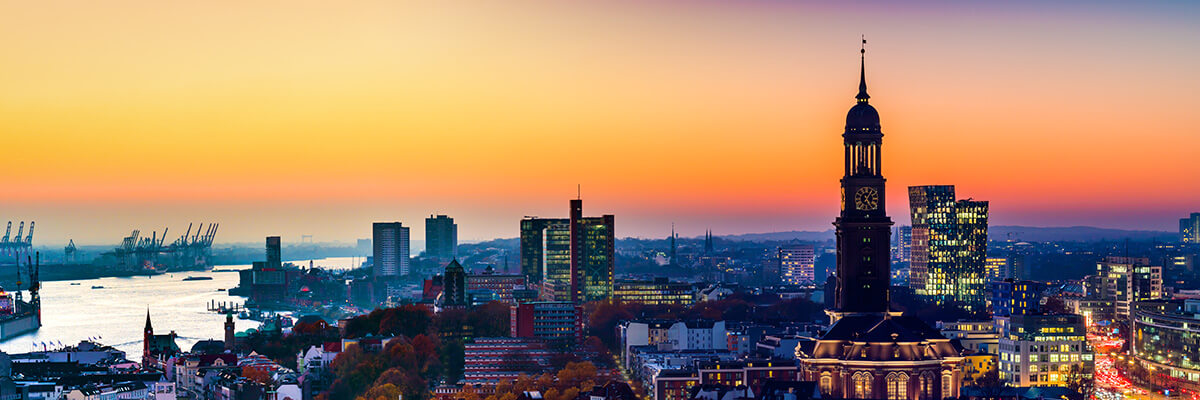A beacon of energy-efficient waste heat recovery
Recovering industrial waste heat is one of the most effective ways to improve energy efficiency on a global scale. By recovering energy that would otherwise be lost to the atmosphere or water and reusing it for other purposes, we can greatly reduce fuel consumption compared with today’s levels. As a result, we can also drastically reduce global carbon emissions.
DATE 2023-11-28The Aurubis Group has taken this very approach to improving sustainability in one of their smelters. Partnering with the German energy supplier enercity Aktiengesellschaft, Aurubis has become the driving force behind a district heating network that serves Hamburg’s HafenCity neighbourhood. The energy for the network comes from waste heat that Aurubis recovers from their nearby sulphuric acid plant, using unique Alfa Laval plate heat exchanger technology that is designed to resist corrosion and withstand the high pressure and extreme heat associated with the process.
The Aurubis Group, one of the world’s largest producers and recyclers of copper, operates a large smelter on the island of Peute, located in the Elbe River, in the heart of Hamburg. Sulphur dioxide gas is a by-product of the pyrometallurgical copper process used here. In the sulphuric acid plant, this gas is converted first to sulphur trioxide and subsequently to liquid sulphuric acid. The sulphuric acid is continuously diluted in the process. Acid dilution is a highly exothermic process, which releases significant amounts of heat. Thanks to Alfa Laval GPHE, this heat can be recovered by Aurubis for use in district heating.
The sulphuric acid production takes place in the smelter’s contact plant. At the heart of the plant lies an intermediate absorption tower. The heat of dilution from this step was originally cooled with river water from the Elbe and thus left unutilized. The aim of Aurubis’ collaborative project with enercity was to use heat exchangers to recover energy from this process, and to put that energy back to use sustainably by funnelling it into the HafenCity district heating network.
High demands on equipment design and materials
Aurubis’ preliminary challenge was that hot water used in this type of district heating scheme needs to have an initial temperature of at least 90°C. As a result, they had to begin by building a completely redesigned intermediate absorption tower, increasing the process temperature of the concentrated sulphuric acid to approximately 120°C, a temperature increase of nearly 50°C.
However, this new intermediate absorption tower added further complications to the already demanding project of designing a heat recovery system involving a substance as challenging as sulphuric acid. The higher process temperature substantially increased the corrosiveness of the medium.
This posed a particularly difficult challenge for the heat exchangers in the project, which needed to be constructed of highly corrosion-resistant materials in addition to being able to handle high pressures and temperatures, and to offer extremely high thermal performance to ensure an efficient transfer of heat from the Aurubis process to the district heating network.
A heat exchanger that’s up to the challenge
Aurubis contacted Alfa Laval, who worked with the copper producer to design customized plate heat exchangers, fully adapted to the demanding process environment. The final system was comprised of eight heat exchangers featuring state-of-the-art channel plate designs. Three of the heat exchangers – the intermediate absorption tower coolers - were semi-welded units, made in Hastelloy D-205 material, a nickel-based alloy that is particularly resistant to sulphuric acid corrosion. D-205 has delivered proven performance at many sulphuric acid plants across the globe since the 1990s. With more than 300 D-205 units installed world-wide, this tried-and-tested material was the obvious choice for ensuring reliable, safe, and efficient operation. The remaining five heat exchanger in the system are fully gasketed plate heat exchangers: three water-water heat exchangers, and two acid-acid interchangers.
Unlike traditional gasketed plate-and-frame heat exchangers, the Alfa Laval semi-welded design is capable of resisting mechanical fatigue in applications with high design pressures and temperatures. The unique plate design also ensures very high thermal efficiency, with a temperature approach as low as 3°C. This means that the water medium used to transfer heat to the district heating network can leave the heat exchanger only a few degrees cooler than the hot acid entering the unit.
Additionally, plate heat exchangers are more compact, allowing for easier, more cost-effective installation in a fraction of the space.
Improving sustainability across several dimensions
Aurubis uses roughly a quarter of the recovered heat from the sulphur dioxide conversion process to support other processes at the smelter. The rest of the heat, corresponding to approximately 160,000 MWh of energy, is fed through the district heating pipeline toward Hamburg’s HafenCity district. Here, the thermal efficiency of the Alfa Laval heat exchanger solution becomes particularly important. Since HafenCity is located on the other side of the Elbe from the Peute Island, the district heating route is more than three kilometres long. Every degree of recovered heat from the process is therefore critical.
Current estimates indicate that, in addition to the what Aurubis uses at the plant site, the recovered heat supplies as many as 8,000 four-person households, as well as area offices, hotels, and a university. As the recovered heat has an effective carbon footprint of zero, the project reduces CO2 emissions by 20,000 tonnes per year – half of them at Aurubis itself. An additional benefit is that Aurubis no longer needs to rely on cooling water taken from the Elbe River, which further benefits the local ecology.
The German Energy Agency has recognized the project as a “beacon of energy-efficient waste-heat utilization.” And there is still potential to do even more. Currently, only one of the three lines of the Aurubis contact plant supplies industrial waste heat to HafenCity, meaning that 480,000,000 kWh can potentially still be recovered. In the future, this could result in a 140,000 tonne-per-year reduction in CO2 emissions.
Energieeinsparungen
160,000 MWh
Emissionseinsparungen
20,000 tonnes CO2/year
Wassereinsparungen
12 million m3 cooling water

